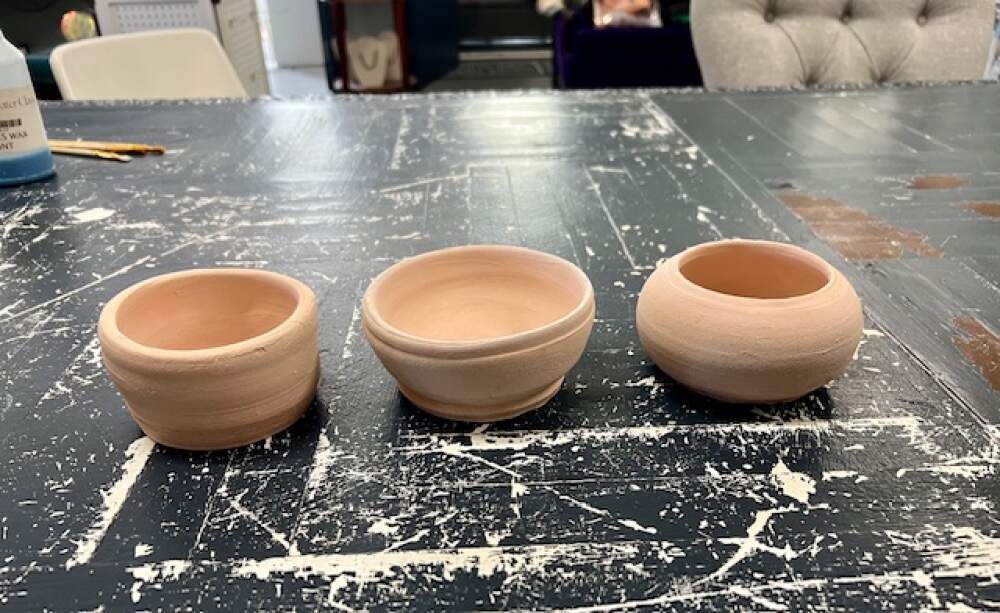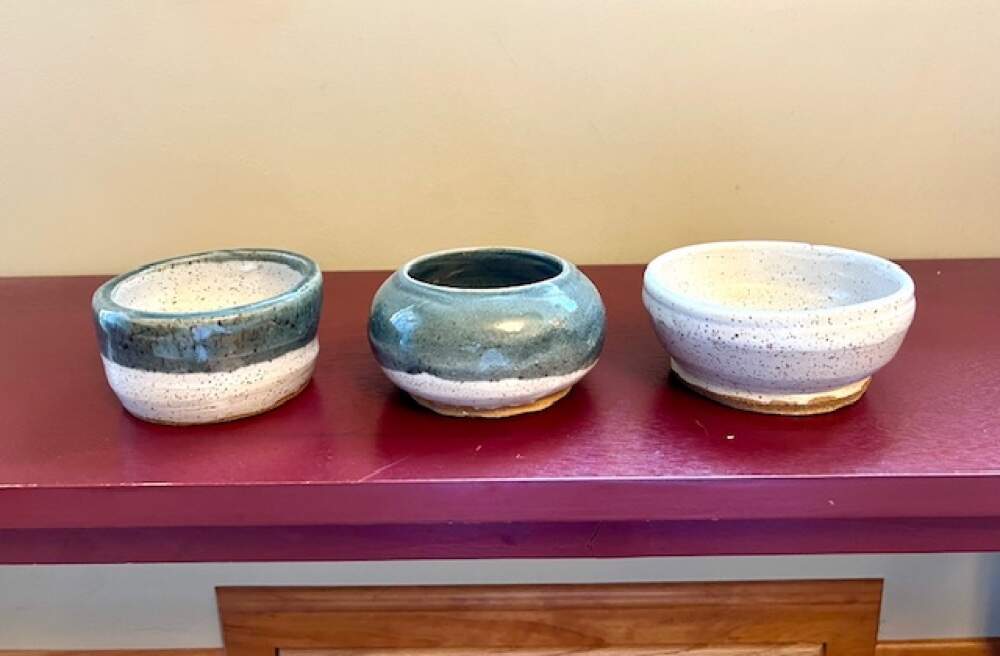Advertisement
Essay
A pottery manual for the messy middle of life

Like most writers, I’m happiest when exploring cliffhangers, conflicts and unresolved dilemmas — for my characters. I’m much less deft with my own. So when my youngest left for college recently and I became an empty nester, this particular plot twist was, honestly, a bit more suspense than I could handle. Then I saw an ad for a local pottery class.
Insert your own “Ghost” joke here, along with a cliché about me being a cliché. Nevertheless, off I trotted, apron in hand, determined to learn a new skill and maybe create a masterpiece or two. As far as the “masterpiece” part goes, I’ll let you be the judge (try not to laugh). But I definitely did learn a whole lot of things — about pottery, but also about myself. And just like the finished ceramic product, not all of it was pretty.
First and most surprising: The mess utterly stymied me. We’re talking thick, sopping brown clay gouged under every fingernail, trapped in every crevice and smeared across every exposed surface. At first, it was exhilarating, like sticking your hands into a mud puddle and splashing around for a bit. But then — you have to clean it all up. I wasn’t sure why this bothered me so much; God knows, I’ve done my share of cleaning up after two kids and three dogs through the years. Then I realized: That was exactly why. As the chief cleaner-upper in my house for decades, I’d been conditioned to minimize messes whenever possible,to prevent them before they happened. So purposefully creating a mess felt… wrong, somehow.

Less surprising? My struggle with the imprecision of it all. On day one, the instructor warned us with a laugh: “Perfectionists sometimes have a hard time in here.” I laughed too, certain that I could embrace pottery’s freewheeling, anything-goes attitude. But I never did quite manage it. Turns out, the process of taking a lump of clay and trying to morph it into a particular shape on a rapidly spinning wheel is … well, imperfect. And difficult. And unpredictable. No matter which shape I thought I was making, it always turned into something else entirely. Fighting this reality only made it worse. When I worked the clay too long, trying to force it into something it didn’t want to be, the piece would often weaken, wobble and sometimes even fling itself off the wheel altogether. Flying pots, let me tell you, are quite a sight. And for a while, they also felt like quite a failure.
Immediate gratification was the next expectation to fly out the window. Here’s how I thought it would go: Spin a pot. Bake a pot. Presto, change-o: You have a pot. Instead, I learned that the process is much, much slower than that. First, the shaped clay has to dry. Then dry some more. Once it’s dry enough, you take a session or two to refine the piece with blades and brushes. Maybe you add a handle, or a lid. Then, it gets a glaze. Then a bake in the kiln. All in all, it took five — sometimes six! — weeks before I held the finished product in my hands. During that time, there were multiple opportunities to make adjustments and additions along the way. While I was ready to see the fruits of my labor, the pottery had other ideas: What’s the rush, babe? We’re taking this nice and slooooow.
Every time my poor, patient instructor wandered away, I would lure her back with questions. “Can you tell me again how to …?” I needed to hear the “rules” again and again. (Even though there are no rules in a pottery studio.) Once, when I was struggling to make a chunk of clay “center” on the wheel, my friend and fellow potter Wendy gave me this piece of unexpected wisdom: “Close your eyes.” As Wendy had already learned, pottery is a physical thing, not a mental thing. Spinning, pressing, feeling … throwing your whole body into it. That’s what it takes to find balance.
Advertisement

I expected the pottery part to be hard — learning a new skill always is. I did not, however, expect the introspection part to be even harder. So from now on, the new and improved Me will be trying to follow a new and improved modus operandi, honed and shaped by countless mistakes on the wheel. I’m calling it “The Pottery Manual for Life.” Here’s what I have so far:
Lesson one: Make a mess. Make lots of them, all the time. That’s what sponges and sinks are for. And no lasting treasure has ever been made without one.
Lesson two: You rarely get the exact result you were aiming for. But that’s all right. Keep spinning. Whatever you end up with is exactly what you were meant to have.
Lesson three: No, life is not “a dress rehearsal.” But that doesn’t mean you have to get everything right the first time. You can make a version, let it sit, and then come at it again with sharp tools and a new perspective. It ain’t over ‘till it’s baked. And even then, you can always grab more clay and try again.
Lesson four: There is a lid for every pot, it’s true. But sometimes you have to make the damn thing yourself.
Lesson five: Even the wobbliest wobbles harden into something astonishing after surviving the heat of the kiln. You’re tougher than you think.
Lesson six: A good glaze is like a good friend: It emphasizes the best and glosses over the worst.
Lucky lesson number seven: When all else fails, close your eyes and feel your way. The world will keep trying to stretch you too thin, knock you into a teeter and fling you around. But as long as you’re centered, you’ll stay on the wheel — a masterpiece, always, in the making.
Follow Cog on Facebook and Instagram. And sign up for our newsletter, sent on Sundays. We share stories that remind you we're all part of something bigger.
